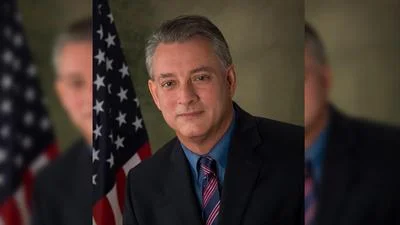WASHINGTON, DC - The Subcommittee on Energy, chaired by Rep. Fred Upton (R-MI), held a hearing today to discuss the state of electric transmission infrastructure, continuing #SubEnergy ’s Powering America series examining aspects of the nation’s power sector.
“A stable and uninterrupted supply of electricity is critical to ensure the public’s health and safety, as well as a quality-of-life that we have come to expect. However, in some parts of the country, our transmission infrastructure, like our nation’s roads and bridges, is aging, congested, and in need of repair or replacement," said #SubEnergy Chairman Upton. “Joining us today is a distinguished panel of experts to help us better understand the challenges that the electric transmission sector is facing, as well as the opportunities that may be within reach."
Chairman Upton delivers his opening remarks
Mr. Tony Clark, Senior Advisor, Wilkinson Barker Knauer LLP, and former commissioner at the Federal Energy Regulatory Commission (FERC) discussed FERC’s most recent ruling, Order No. 1000, which attempts to regulate transmission planning while promoting competition. “In short, even amongst those who are broadly supportive of the original Order, there is a widespread sense that Order No. 1000 is underwhelming in terms of producing results commensurate with its costs. In light of this, I argue that it is appropriate for policy makers to consider Order No. 1000’s future given its track record," he testified.
In his testimony, Mr. Rob Gramlich, Founder and President, Grid Strategies LLC, told #SubEnergy, “Transmission delivery capability has improved markedly since this Subcommittee helped pass the Energy Policy Act of 2005. While providing a source of optimism, that progress still puts the grid nowhere near where it needs to be given the age of existing transmission assets, the need to connect new generation and consumption sources, the opportunity to develop rural economies by accessing remote resources, and the many reliability and economic benefits that would accrue to electricity customers with an expanded and more dynamic bulk power network."
Mr. John Twitty, Executive Director, Transmission Access Policy Study Group, testified regarding Order 1000 and competition, discussing, “Unfortunately, despite Order 1000’s efforts to promote a competitive transmission development process and vigorous competition for those projects that have been open to competition, positive results have been limited. FERC Staff’s own analysis shows that in 2016, no proposals submitted by nonincumbent transmission developers were selected by any of the transmission planning regions that had competitive proposal windows-a strong indication that the Commission’s effort to foster more efficient and cost-effective transmission development through competition is significantly flawed."
Ms. Jennifer Curran, Vice President, System Planning, Midcontinent ISO, spoke to the recent trends that impact the planning process, commenting, “The abundance of low-cost natural gas, combined with legacy environmental regulations targeting emissions from coal-fired power plants and state policies promoting renewables, has put additional pressure on the traditional generation fleet."
She continued, “Additionally, energy-efficiency initiatives and “demand-side" programs that compensate customers for reducing their electricity use are growing in popularity, as are emerging technologies such as energy storage and distributed-energy systems like rooftop-mounted solar panels that allow homeowners to generate their own energy and sell, or receive credits for, excess power delivered back to the grid."
Dr. Ralph Izzo, Chairman, President and CEO, Public Service Enterprise Group Incorporated, focused on the effect of Order 1000 on public utility companies, stating, “Order 1000 drives investment to the band-aid, shorter-term solution, not the solution that is most cost-effective for customers in the long run. This hardly seems the path to effectively address the risks customers face from an aging infrastructure, extreme weather, cyber and physical security threats and the urgent need for a diverse and resilient generation supply."
The Majority Memorandum, witness testimony, and an archived webcast are available online HERE.





